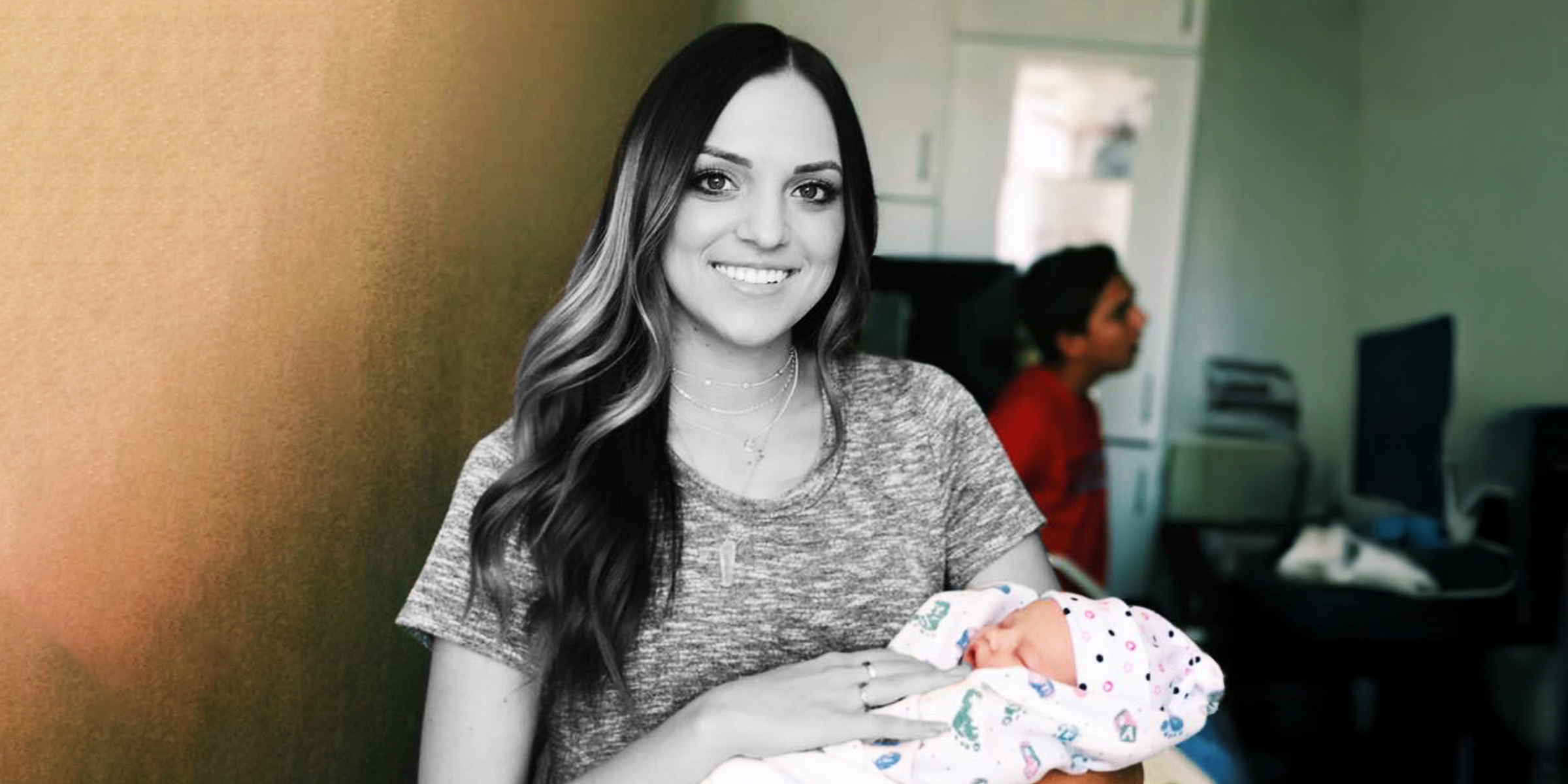
A Husband Took His Wife to the Hospital to Give Birth – She Died in His Arms After Delivering Their Second Child
What was meant to be a simple second birth turned into a nightmare for a young couple when the pregnant wife suffered several complications before, during, and after giving birth. Her husband was the one who called it when she faced her last complication.
When Jared Wilson brought his pregnant wife, Caitlyn, to a Buffalo, New York, hospital for the birth of their son, Gabriel, he did not expect to face an unimaginable tragedy. Instead of returning home with their newborn, Jared had to contend with the death of his wife.
The Initial Struggles Caitlyn Faced That Fateful Day
On December 12, 2022, Jared, an anesthesiology resident, dropped his wife off for her scheduled induction. He then headed home to care for their one-year-old son, Lincoln. Later that night, he rejoined his wife at the hospital.
Initially, labor progressed smoothly. Caitlyn received an epidural around 1 a.m., and shortly after, an obstetrics (OB) resident arrived to break her water. According to the National Institute of Child Health and Human Development, several common complications can occur during labor and delivery.
These include:
Slow or Stalled Labor: Contractions may weaken, or the cervix might not open enough. If labor fails to progress, doctors may administer medication or perform a C-section.
Tearing: As the baby emerges, the vagina or nearby areas can tear. While small tears usually heal independently, larger ones or surgical cuts (episiotomies) require stitching by a doctor.
Umbilical Cord Problems: The cord might wrap around the baby’s neck or get pinched. Doctors carefully manage these scenarios to keep the baby safe.
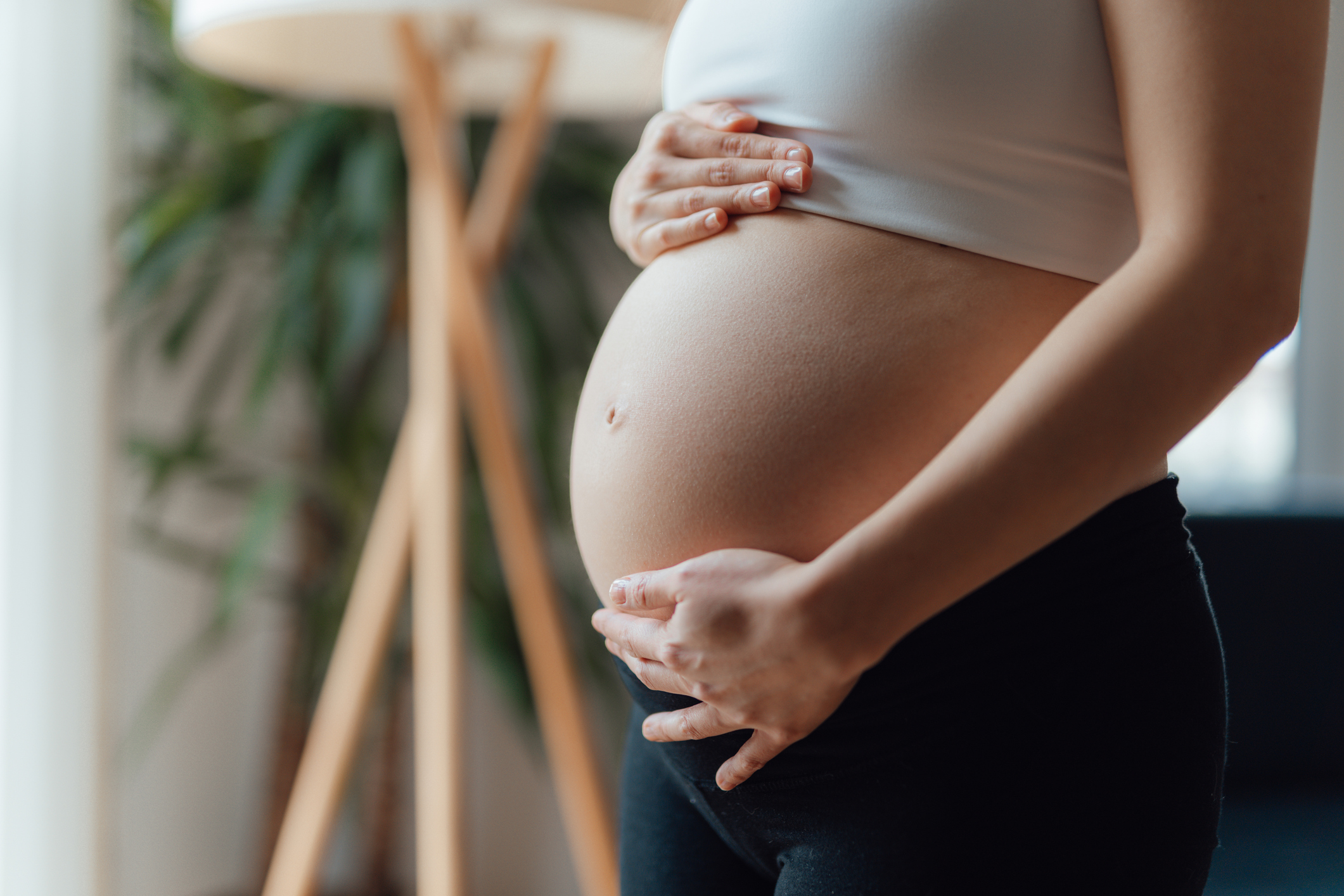
A pregnant woman holding her belly | Source: Getty Images
Baby’s Heart Rate Issues: A baby’s heartbeat might change during labor. Often, repositioning the mother helps; otherwise, a C-section or episiotomy may become necessary.
Water Breaking Too Early: Typically, labor begins soon after the water breaks. If not, doctors may induce labor. If the water breaks too early, especially before 34 weeks, doctors monitor the mother for infection.
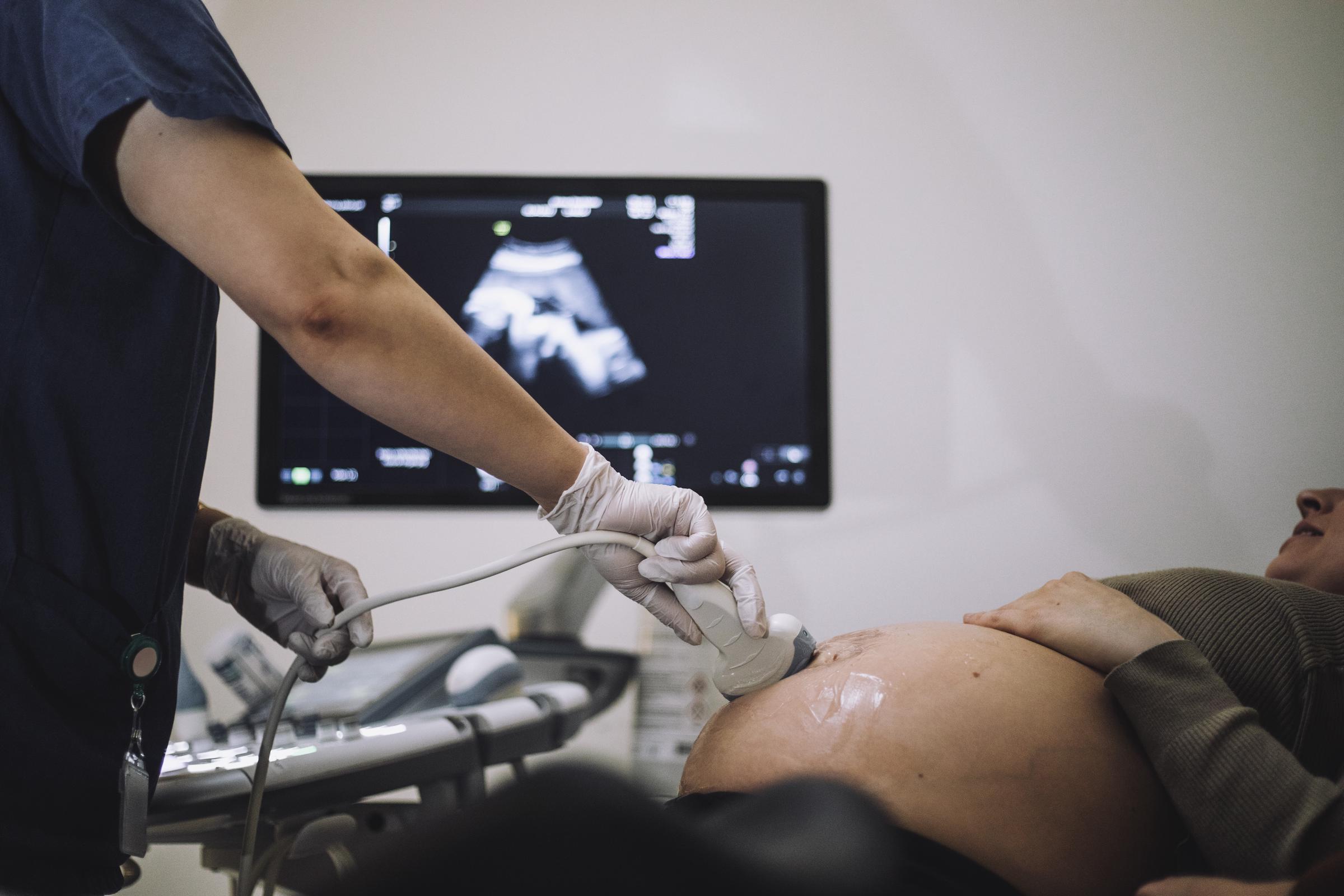
A pregnant woman getting an ultrasound in a hospital | Source: Getty Images
Lack of Oxygen (Perinatal Asphyxia): Insufficient oxygen during pregnancy, labor, or after birth can pose serious risks to the baby.
Shoulder Dystocia: After the baby’s head is delivered, one shoulder may get stuck. Doctors employ specific techniques to free the baby safely.
Heavy Bleeding: Severe bleeding, often from a torn or poorly contracting uterus, is a major cause of maternal deaths worldwide. Medications like misoprostol can help reduce this risk.

A pregnant woman taking medication | Source: Getty Images
Jared explained that there had been no warning signs regarding the baby’s position. However, during delivery, the OB resident discovered Gabriel’s arm raised near his face, with the umbilical cord positioned behind it.
As the resident maneuvered to assist, Gabriel’s arm slipped into the birth canal, causing the umbilical cord to compress between his neck, head, and the uterine wall as the amniotic fluid drained.
Jared described the outcome, saying, “That leads to a condition called uterine cord prolapse, which has a really, really high mortality rate [for the baby] because he immediately starts to suffocate.”
Once the prolapse was detected, nurses and chief residents rushed in to help. The chief resident inserted her hand into Caitlyn’s uterus to lift Gabriel off the cord and initiated an emergency cesarean section immediately.
“Things were happening really fast,” Jared recalled. At 2:02 a.m., he texted both sets of parents, asking for prayers as Caitlyn was wheeled into the operating room. Just fifteen minutes later, surgeons returned with timestamped photographs from 2:12 a.m., showing Gabriel’s safe delivery.
Jared described the moment: Gabriel was “healthy,” “screaming,” and “all signs looked good.” However, further complications arose when doctors transitioned Caitlyn to general anesthesia. Because her epidural had only recently been administered, she still had sensation in her abdomen, necessitating intubation for the emergency surgery.
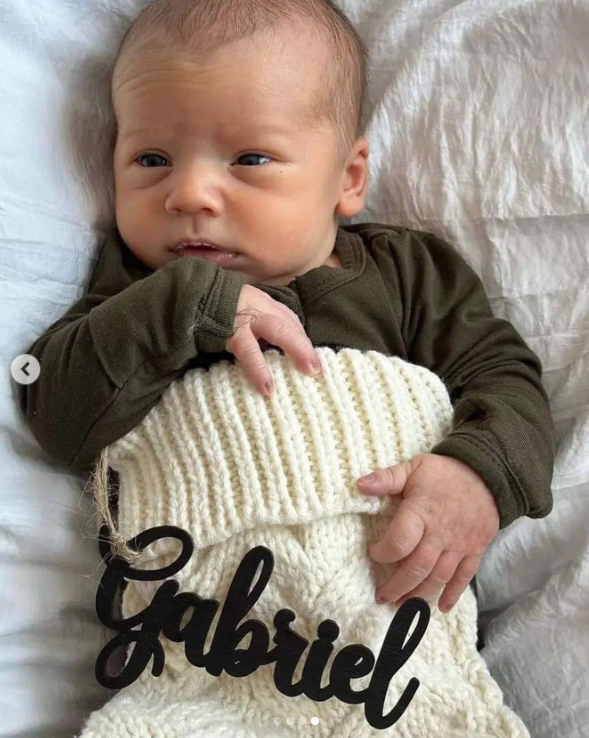
Gabriel Wilson photographed in a post dated December 29, 2022 | Source: Instagram/sweetbuffalo716
Jared explained that one of the inherent risks of general anesthesia is aspirating stomach fluids into the lungs, a danger heightened during emergencies and especially for pregnant women. Caitlyn, having consumed water throughout the day and carrying a full-term baby, faced increased stomach and lung pressure.
During intubation, significant amounts of water and stomach acid surfaced in Caitlyn’s mouth. Despite the medical team’s efforts to suction the fluids and secure the breathing tube, there was concern about how much had already entered her lungs.
About two hours later, she was wheeled back into her room, requiring minimal oxygen support, and the surgery was deemed successful. Jared noted that during the cesarean, surgeons sutured quickly and firmly, foregoing the usual careful separation of tissue layers to prioritize the baby’s safe delivery.
“That increases her recovery time, and it’s very difficult and very painful, particularly when you feel like you’ve swallowed a swimming pool because Cait was coughing really, really hard,” Jared continued. He added that Caitlyn had previously suffered from mild bronchitis, with “pretty inflamed and reactive” airways.
His wife struggled to cough effectively because her “stomach felt like it was going to tear open.” “She got a lot out, and Gabriel was healthy and he was safe, and Caitlyn seemed safe and healthy,” Jared remembered thinking.
“She looked like she was probably going to struggle for a little bit, and she started antibiotics to make sure she didn’t get any kind of pneumonia from the fluid,” he added. “But the plan was she’s a healthy 27-year-old with no other health conditions whatsoever.”
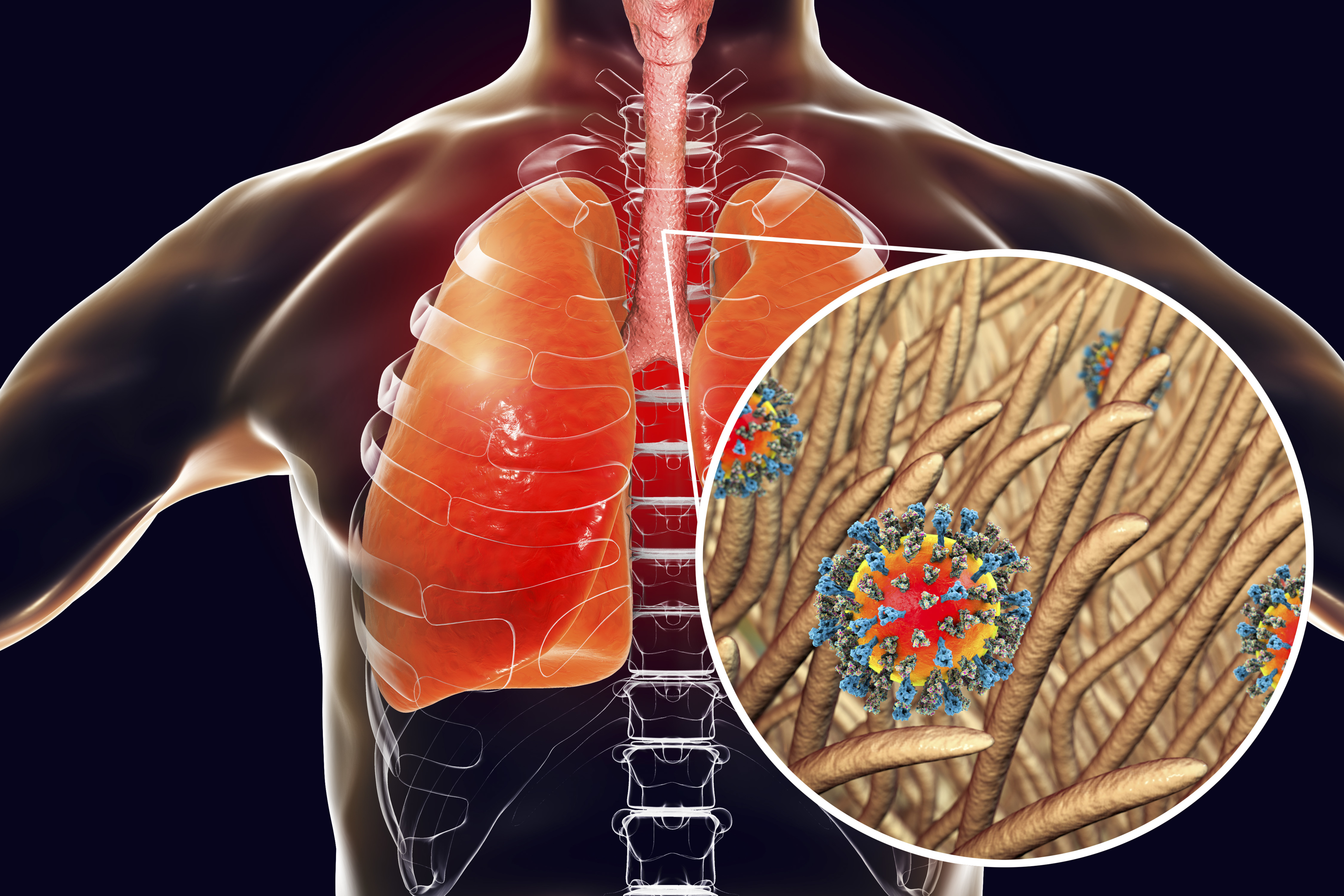
A stock illustration of pneumonia caused by measles viruses | Source: Getty Images
Jared noted, “People aspirate food in their lungs all the time when they get drunk and fall down, or they vomit and pass out. A healthy 27-year-old should bounce back really quickly.” Unfortunately, things took a turn for the worse.
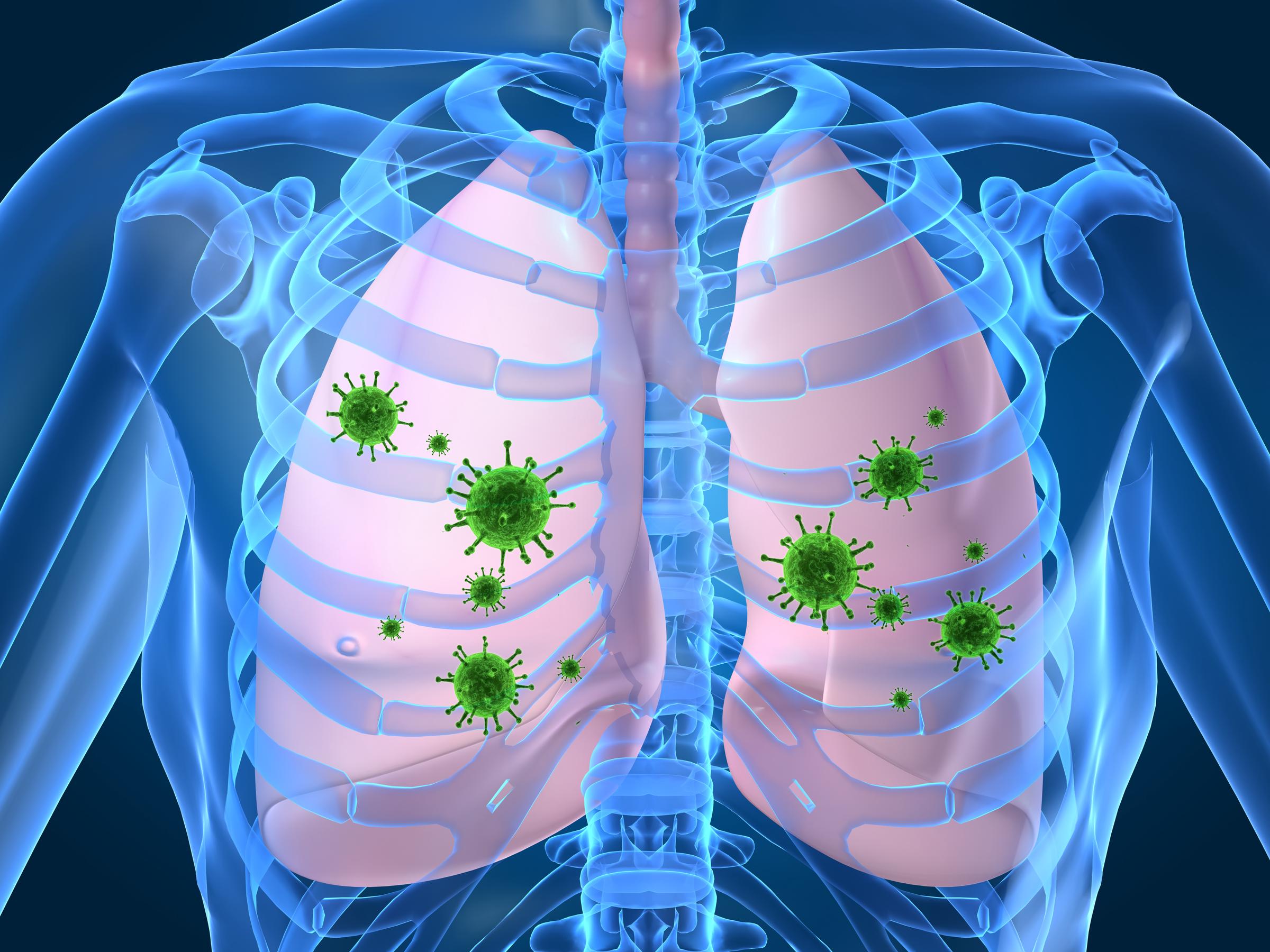
A 3d stock photo illustration of a lung infection | Source: Getty Images
What Went Wrong?
In the days after delivery, Jared noticed several complications, though obscured by what he called a “perfect storm of aspiration, emergency surgery and [sic] pregnancy.” Caitlyn remained in the labor and delivery unit so her oxygen levels could be monitored, though she focused on returning home to her children.
Despite supervision, she was in significant pain. Jared observed her elevated heart rate, swelling in her lower legs, and immense physical strain from several factors.

An Ob/gyn doctor performing an ultrasound of a baby on a pregnant woman | Source: Getty Images
These included the cesarean section, hormonal fluctuations from milk production, and emotional stress from being confined to the hospital, separated from home and her newborn. Her condition worsened gradually, eventually requiring increased oxygen support.
She was transferred to the intensive care unit (ICU), while Jared brought newborn Gabriel home. In the ICU, Caitlyn was placed on the highest level of non-invasive oxygen support available.

A pregnant couple having sonogram | Source: Getty Images
Each day, her oxygen needs increased. However, she remained awake and communicative, and her pain was effectively managed. On December 21, Jared’s 30th birthday, Caitlyn agreed to intubation due to escalating lung inflammation.
Jared recalled her readiness, saying, “She was tired of running this marathon and [sic] I could see it in her.” Soon after intubation, more complications arose.
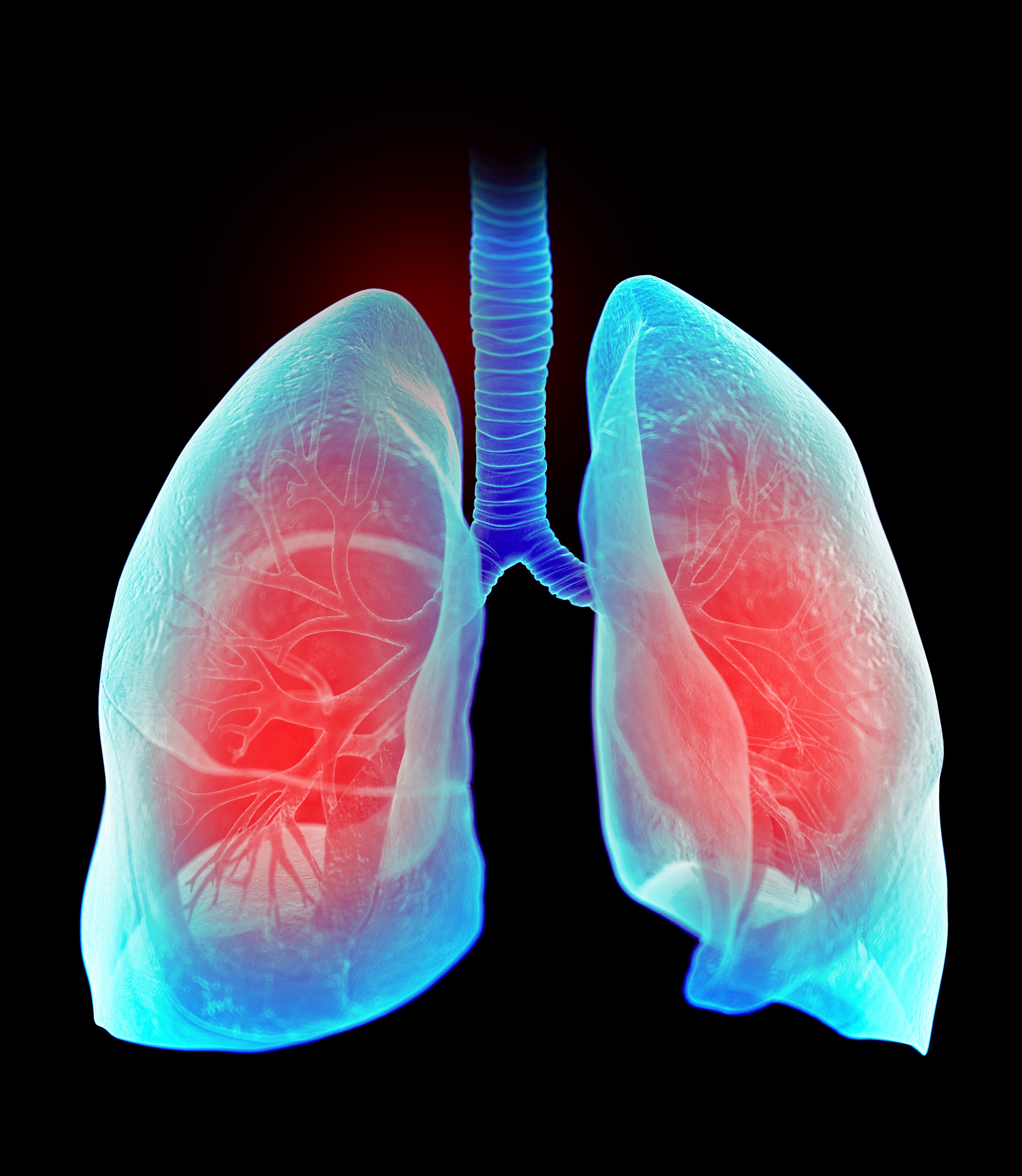
A stock illustration of the human lungs | Source: Getty Images
Until then, Caitlyn had only been on low-dose pain relievers and medications for acid reflux and constipation. Jared emphasized she had been “the healthiest person in the ICU.”
He explained that her condition deteriorated immediately after intubation. “The minute we intubated and she desaturated, we could not keep Caitlyn up,” he said. Despite the ventilator’s precise design to mimic human respiration, it failed to stabilize her.
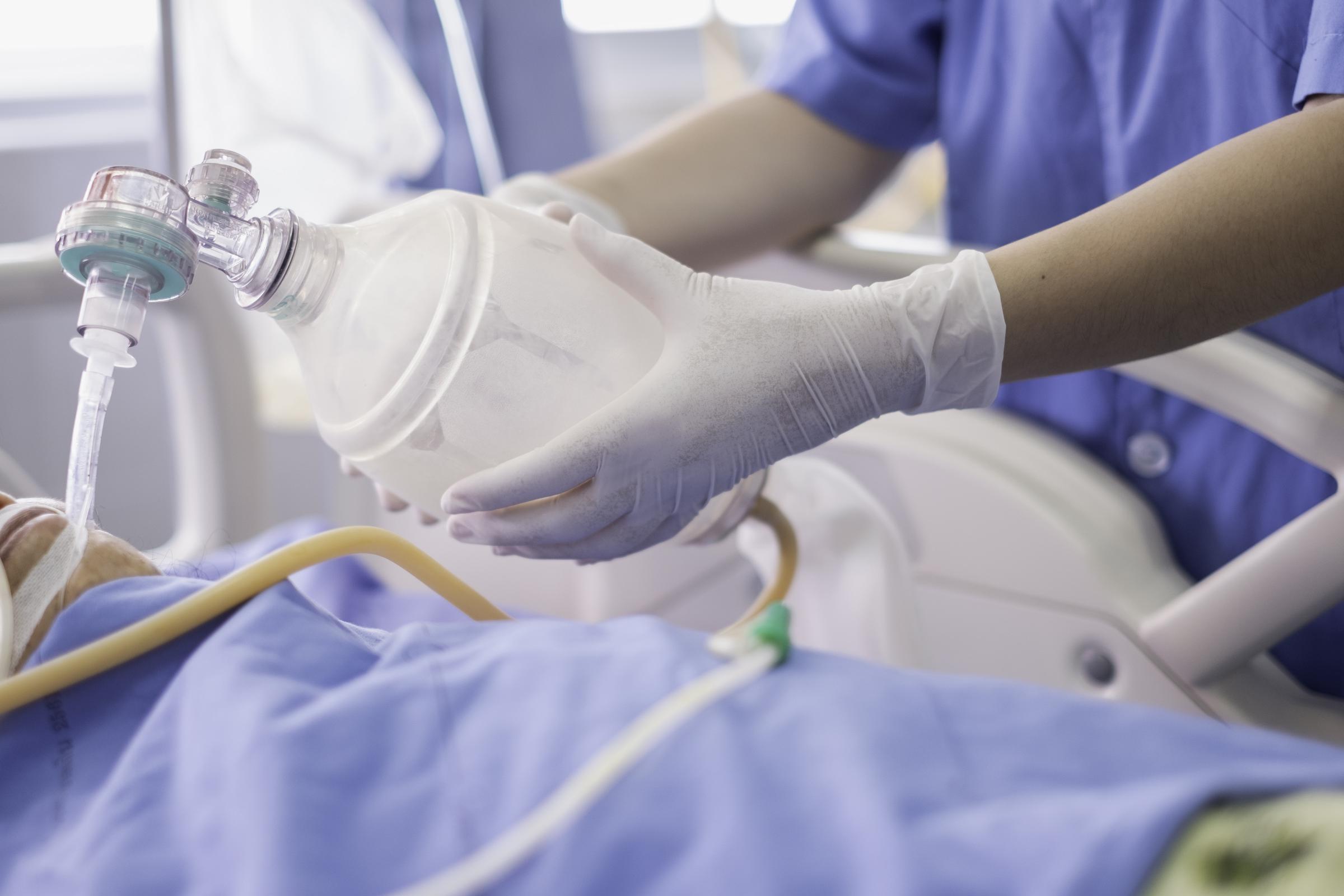
A doctor holding an oxygen ambu bag over a patient in the ICU/emergency room | Source: Getty Images
Simultaneously, her previously stable lab results changed drastically. Her white blood cell count, a key indicator of infection, surged from 10 to 40 within eight hours, an alarming escalation.
Jared shared that as soon as his wife relinquished control and accepted medical help, her health rapidly declined. Her blood pressure dropped and could not be stabilized, largely due to the physiological effects of pregnancy.

A ventilator monitor runs while a patient is given oxygen by an intubation tube in the emergency room | Source: Getty Images
These included increased vascular permeability, causing administered fluids to leak into tissues and muscles rather than staying in blood vessels. This posed a significant risk to her lungs.
Yet withholding fluids was not an option because she was dehydrated, had low blood pressure, and had lost considerable blood, necessitating both fluid and blood transfusions. Further imaging revealed at least two blood clots in her legs and suggested a larger clot may have reached her heart.
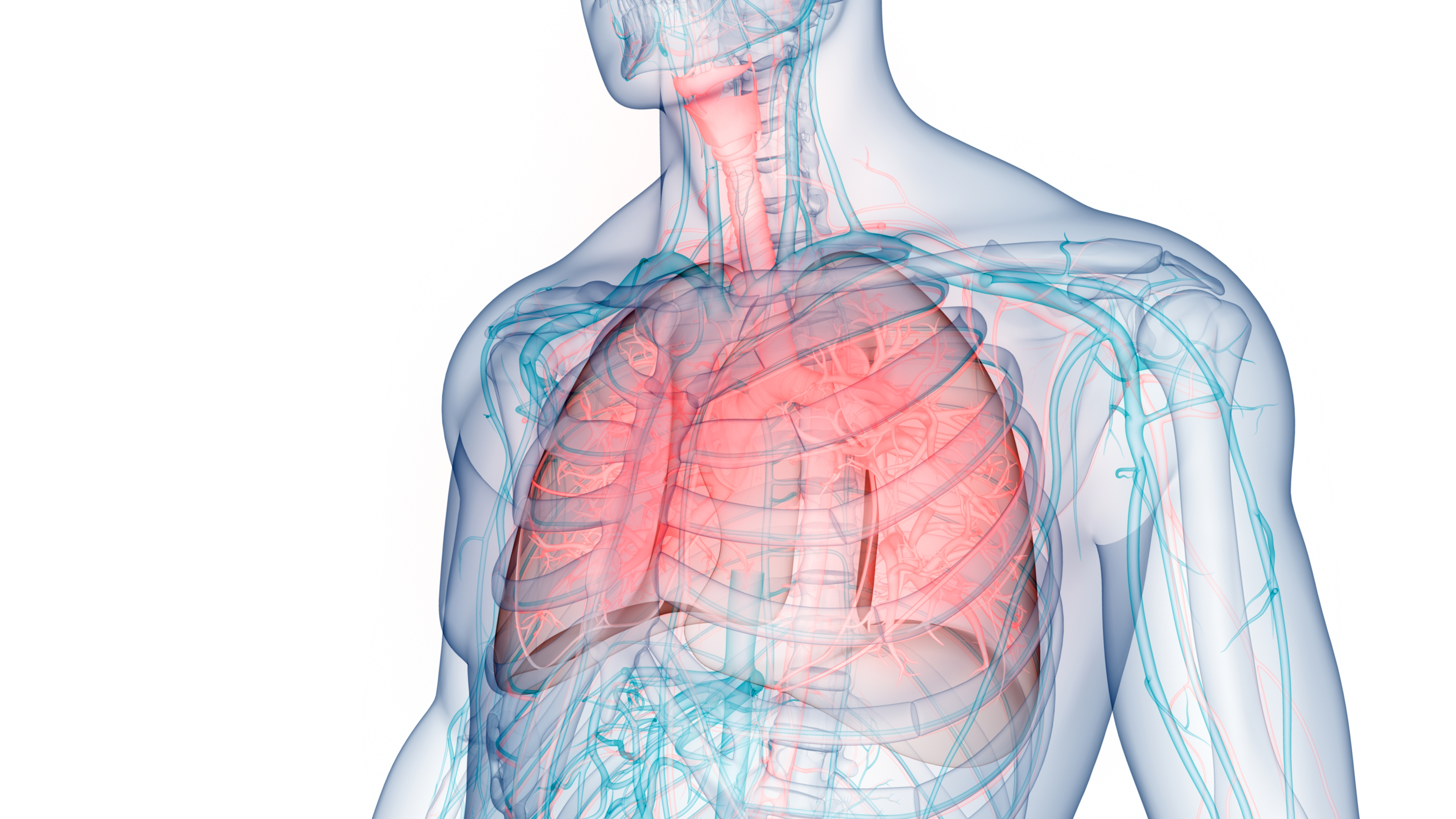
A 3D illustration of the human respiratory system and lungs | Source: Getty Images
According to the Cleveland Clinic, blood clots are thick clumps of blood cells and other materials that form in vessels. While clots typically help stop bleeding after injury or surgery, they can sometimes cause life-threatening complications. Several factors can increase the risk of developing clots, including severe COVID-19.
Age also plays a role, especially for those 65 and older. Pregnancy and obesity can increase the risk, as can having cancer. Using birth control pills, undergoing hormone therapy, and smoking are other factors. Even simply being unable to move around for long periods can make blood clots more likely.
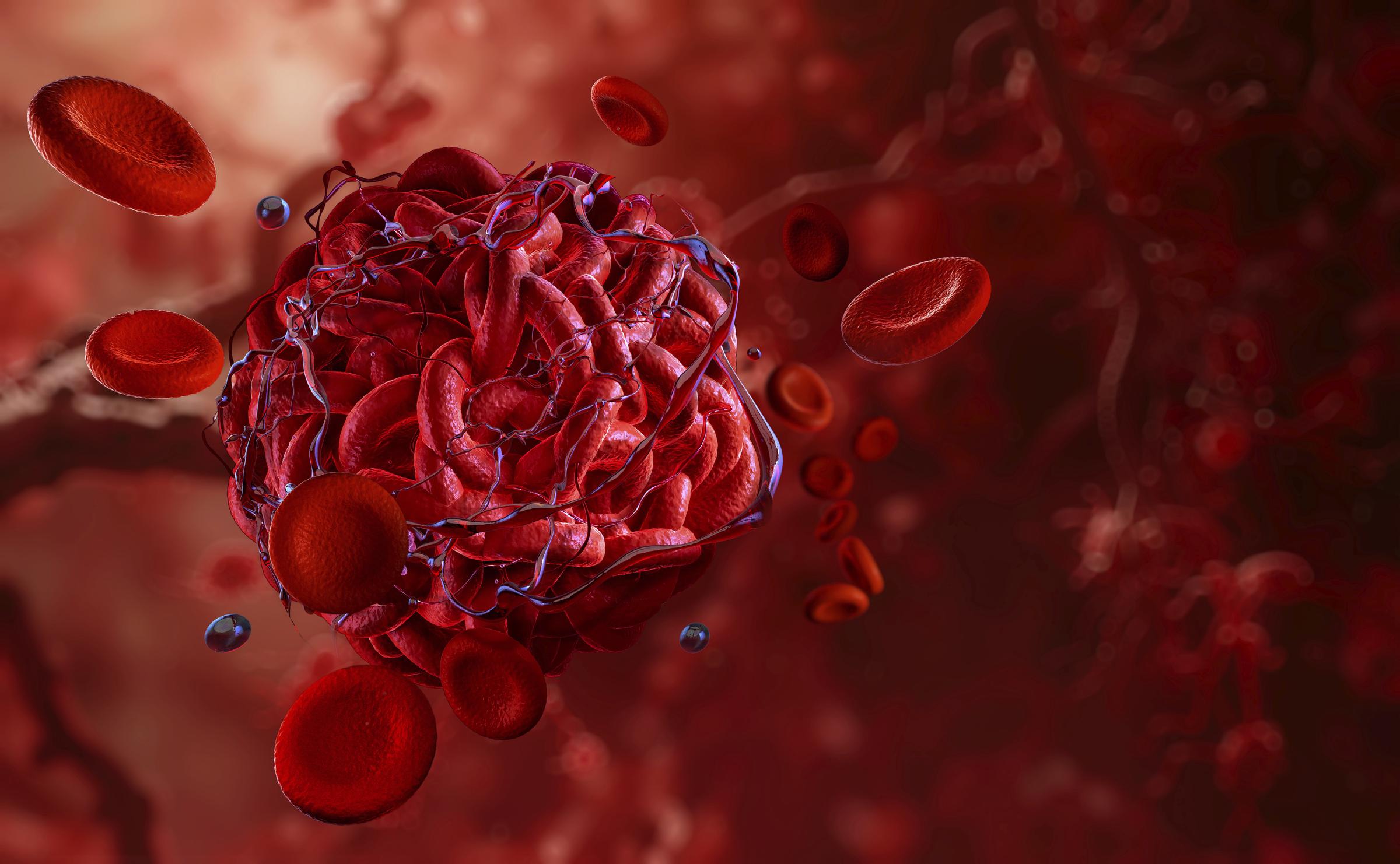
A stock illustration of a blood clot within an artery, showing red blood cells and fibrin strands | Source: Getty Images
Caitlyn’s findings pointed to obstructive shock, where standard treatment restricts fluids. Simultaneously, she battled septic shock, requiring aggressive fluid administration.
She also needed blood thinners to address the clots, a risky course so soon after a cesarean section and significant blood loss. Jared reflected that until the 21st, Caitlyn remained a strong, communicative presence, though pale and fatigued.
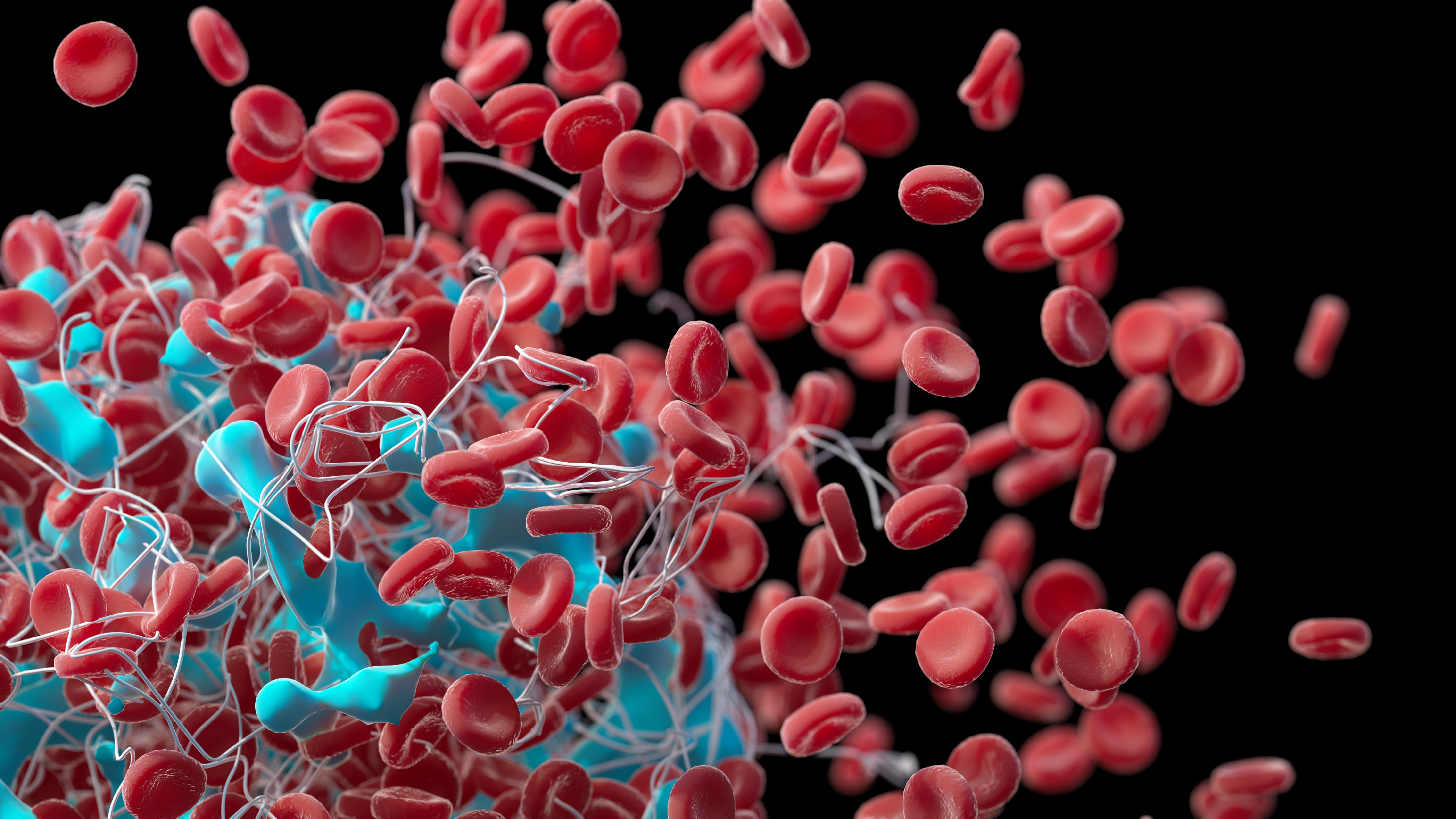
A stock illustration of clotted human red blood cells | Source: Getty Images
However, after agreeing to intubation, her health declined rapidly. Twelve hours later, Caitlyn coded for the first time but was resuscitated. By midnight, signs of irreversible organ damage appeared as her team struggled to maintain oxygenation, blood pressure, and contain the sepsis.
Despite exhaustive efforts, the team failed to stabilize her. Jared explained that their final attempt was dialysis to filter acid and white blood cells from her blood in hopes of preserving organ function.
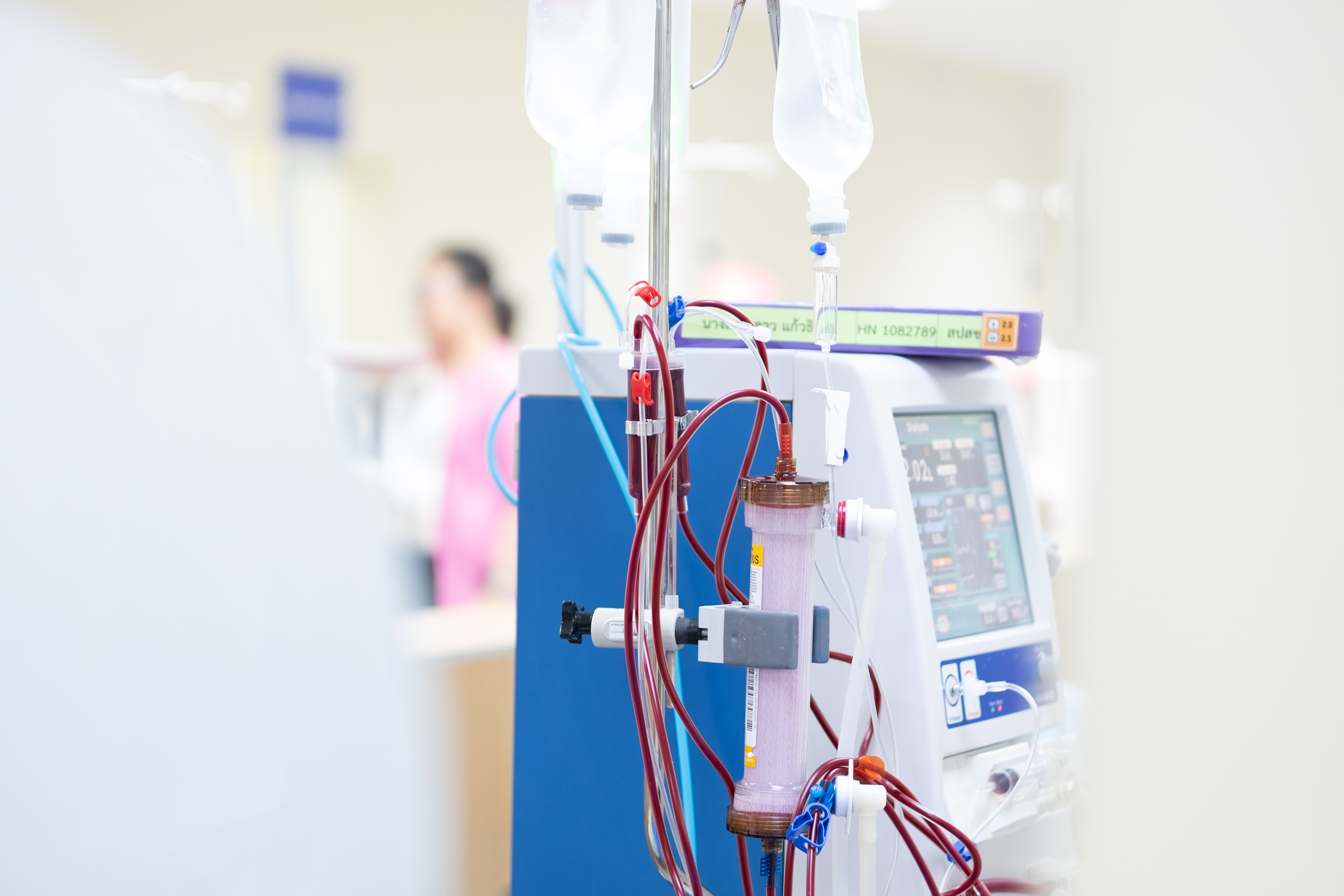
A dialysis machine | Source: Getty Images
However, dialysis also removes fluids, a risk for someone in septic shock, where fluid retention is crucial. On December 22 at 6:56 a.m., Caitlyn coded a second time. Jared arrived at her room around 6:59 a.m. to find the team already performing chest compressions.
They were preparing to administer more epinephrine when he, dressed like the other doctors, made a heartbreaking decision. Due to his role as an anesthesiologist at the hospital, Jared was granted the courtesy to remain at his wife’s side each night.
Wearing the same uniform as the other doctors, he entered the room during the resuscitation efforts. Jared asked the team to stop and officially called the code himself. The machines were turned off, and the room emptied, leaving him holding Caitlyn in his arms. However, he was lucky to have the support of his family and others afterward.
The Aftermath
In the weeks following Caitlyn’s death, Jared and his sons traveled to Utah to stay with her parents until the funeral, held on January 15, 2024. He expressed deep gratitude to his own parents, who made significant sacrifices to support him.
They sold three houses, two vehicles, and nearly all their belongings to move from Utah to Buffalo and help him care for Lincoln and Gabriel. “They started this process the day I told them Caitlyn might not make it,” Jared recalled.
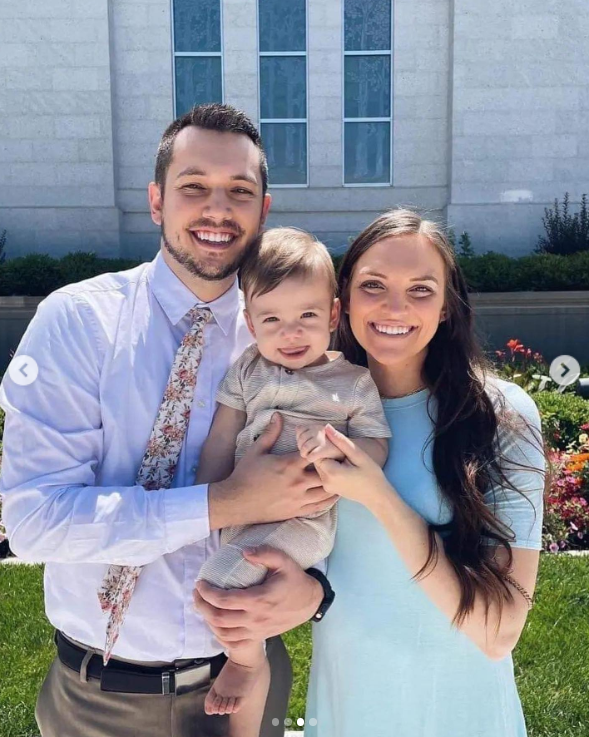
Jared and Caitlyn Wilson with one of their sons | Source: Instagram/sweetbuffalo716
He admitted that he had not considered how he would balance a grueling 75-hour workweek on a resident’s salary while raising two young children alone. Reflecting on his early days with Gabriel, Jared acknowledged the profound differences compared to Lincoln’s birth.
He had witnessed Lincoln’s birth and the immediate bond formed as Caitlyn held their first son. With Gabriel, the experience was starkly different. “They delivered Gabriel to me in a bundle that night. He could have been anybody’s baby. I hate to say that,” he admitted.
During Caitlyn’s hospitalization, Jared and Gabriel had little opportunity to form the usual early bond. “When taking him home, I just remember crying the whole way,” Jared said, mourning the joyful moments they missed.
Reflecting on his wife’s ordeal, Jared expressed profound gratitude toward the hospital staff, describing them as “angels and heroes in my eyes.” He emphasized that Caitlyn received the best care, saying, “She required no real treatment besides oxygen for days, and then it just went south so quickly.”
As an anesthesiologist, he acknowledged that Caitlyn’s complications were ones he carefully considers with his own patients daily. “She received the absolute best of care,” he affirmed, adding that his professional knowledge gave him some peace, lessening the weight of unanswered questions.
Though he continues to mourn, Jared finds solace in the time they shared. “Three and a half years with this amazing woman” was, to him, a lifetime’s worth of love. He acknowledged the heartbreak that his sons would not know their mother fully, but he remained committed to preserving her memory.
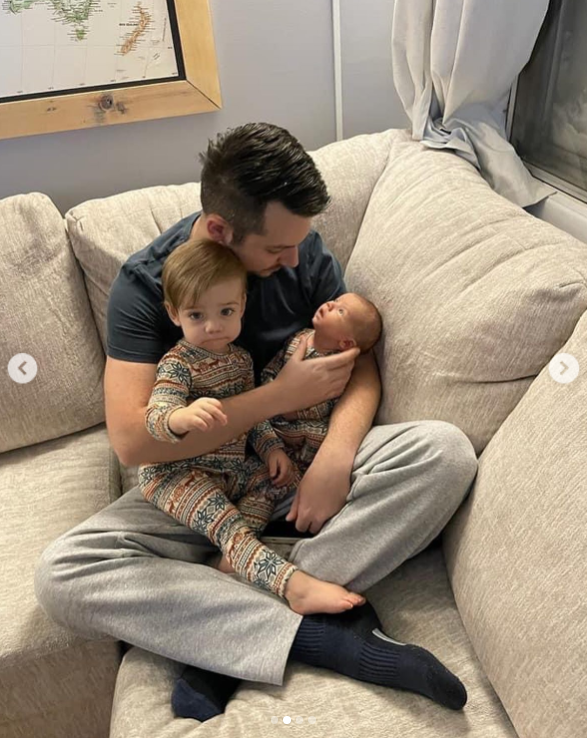
Jared Wilson with his sons Lincoln and Gabriel Wilson | Source: Instagram/sweetbuffalo716
Jared reflected, “True love, as sappy and as fairytale and cheesy as it sounds, is real, and it absolutely transcends any boundary of death, life, distance, or mom.” He believes their love will sustain him and ensure his sons grow up knowing about their mother.
“Her family loves, and misses, and honors her daily,” he added, noting their efforts to memorialize Caitlyn and teach Lincoln and Gabriel about the extraordinary woman she was.
Jared’s journey is a testament to resilience, as he honors his wife’s memory while raising their sons with unwavering love. Through loss and hardship, he continues to find strength in the life they built together.


